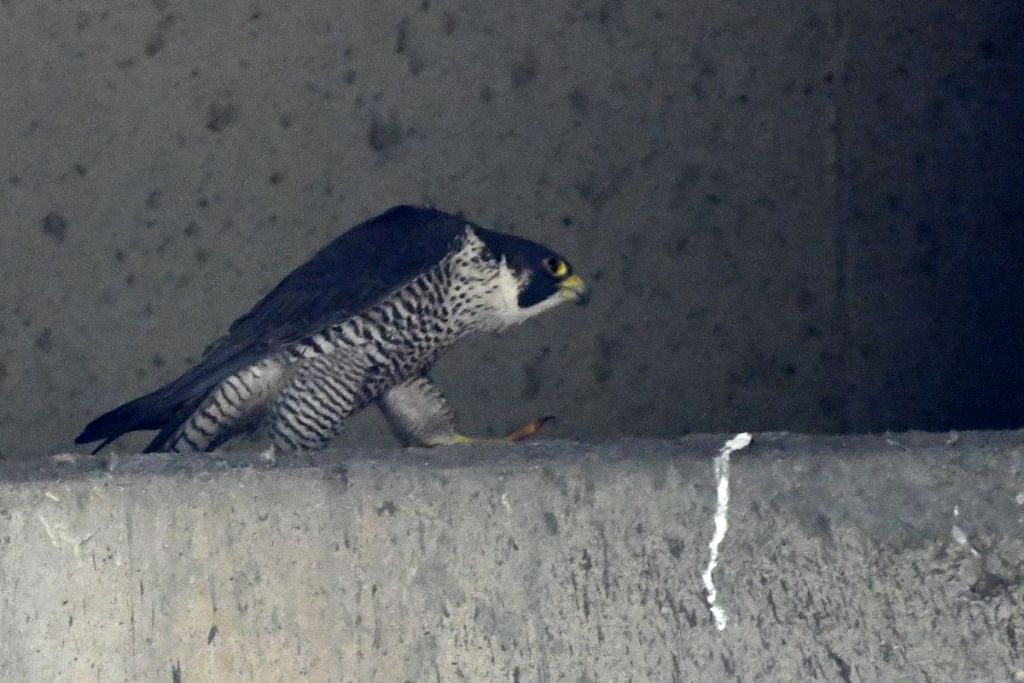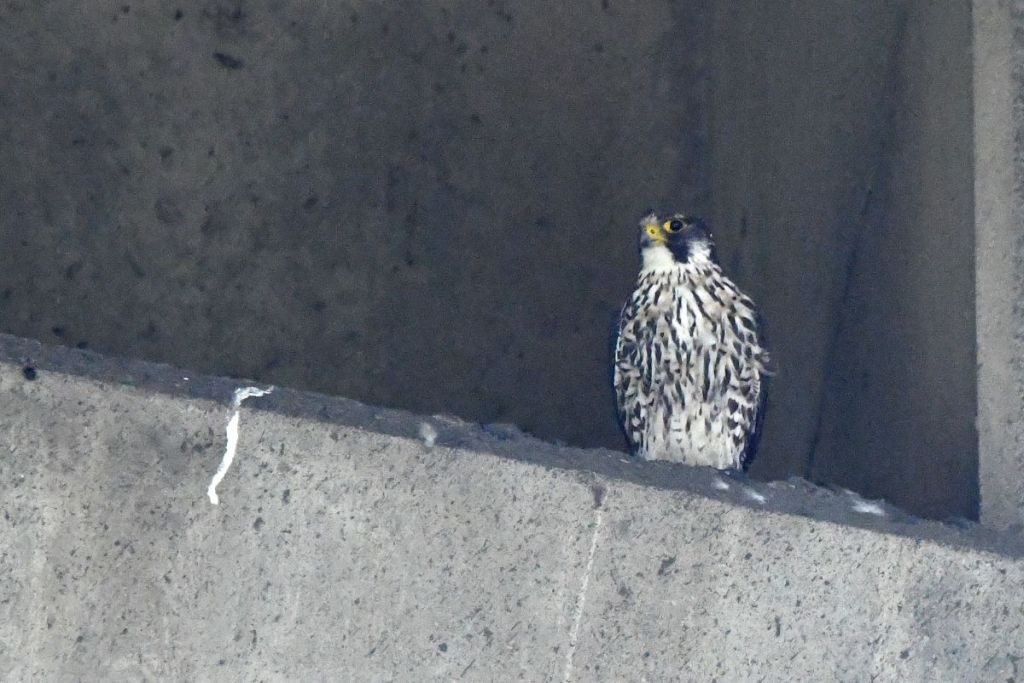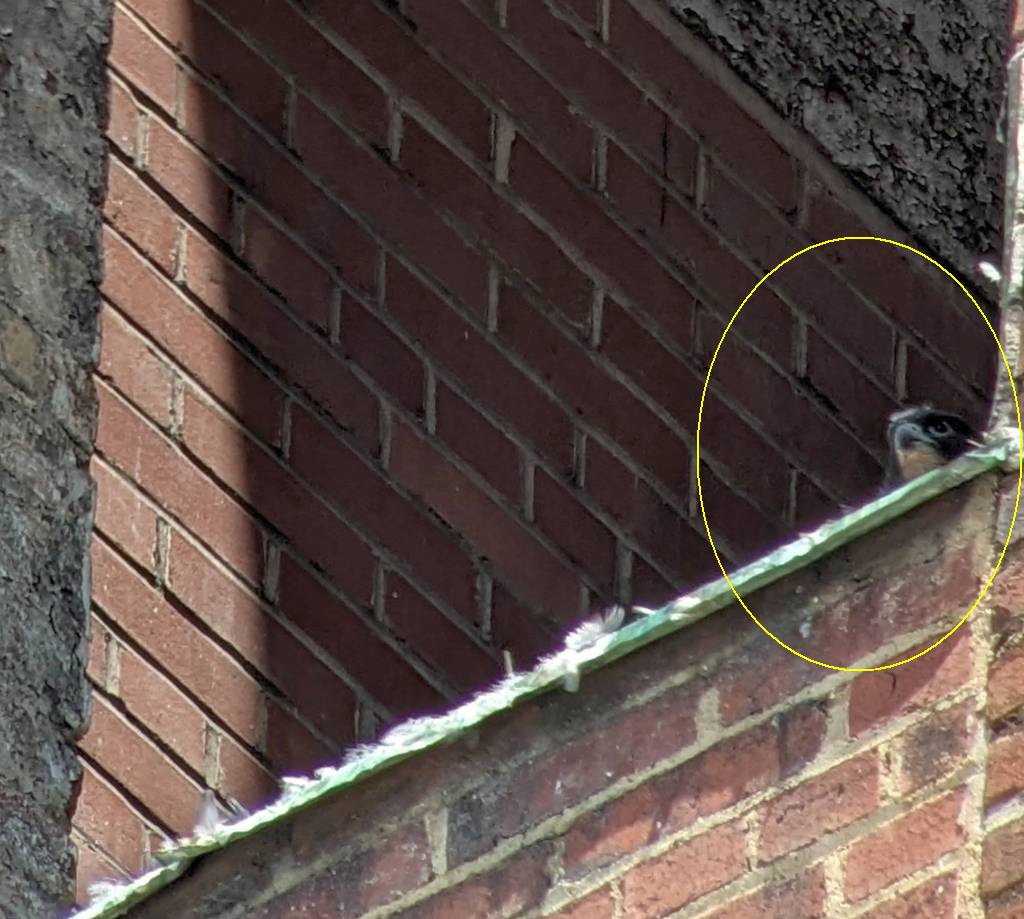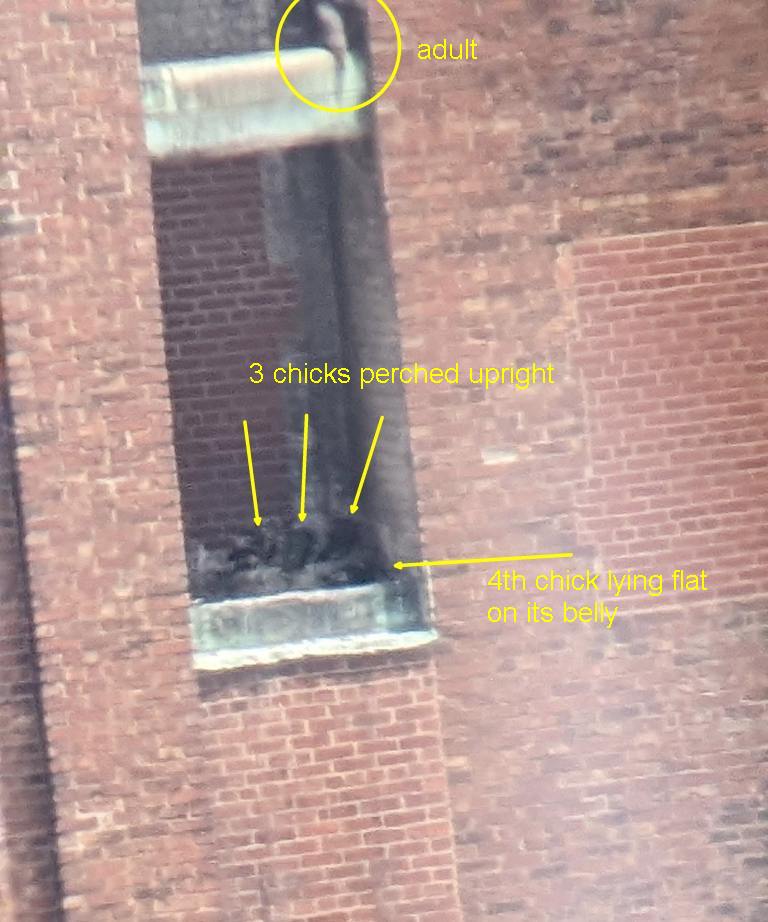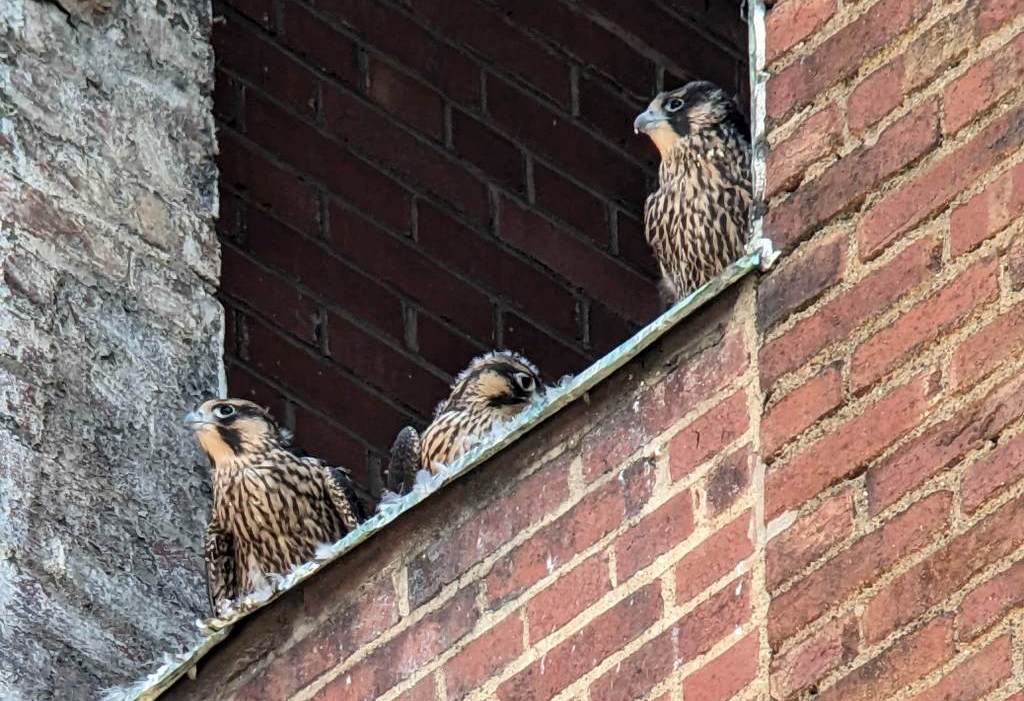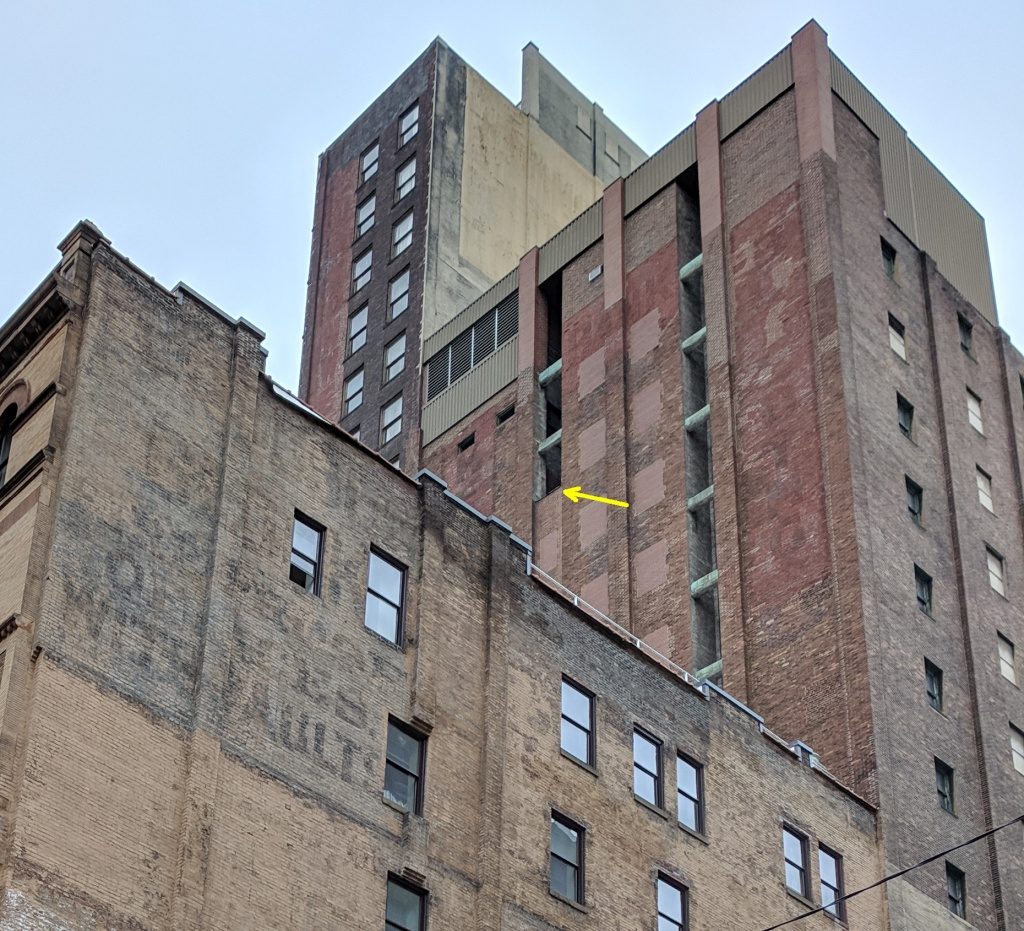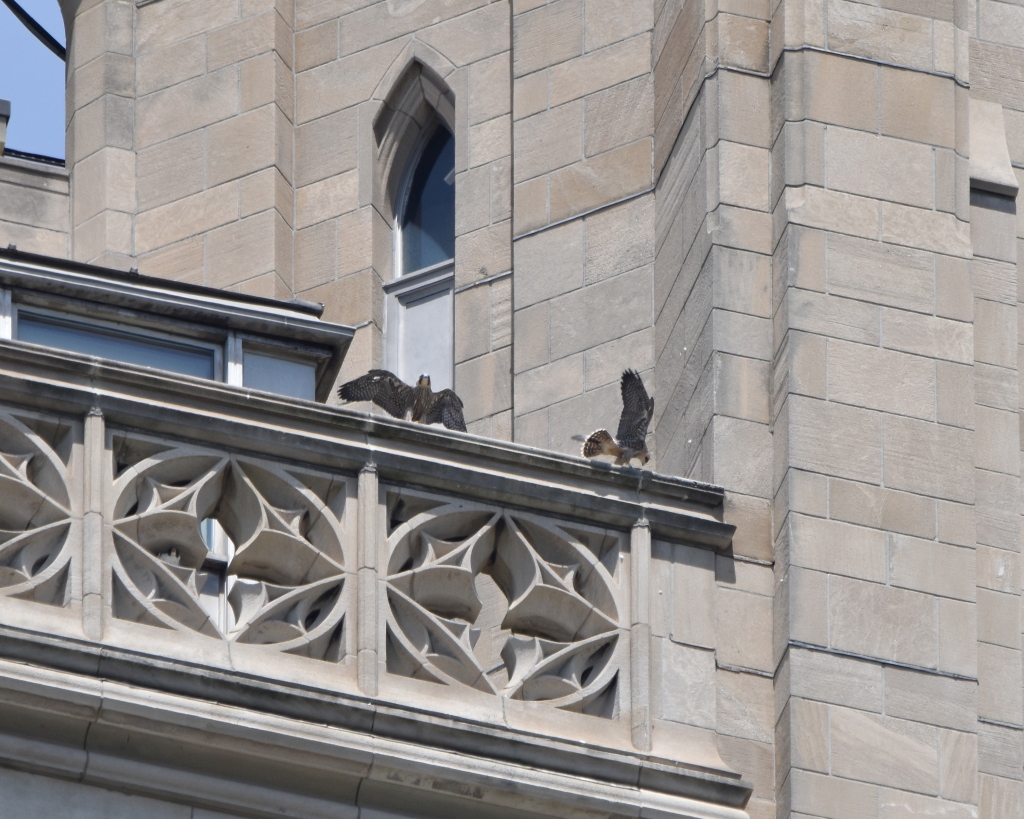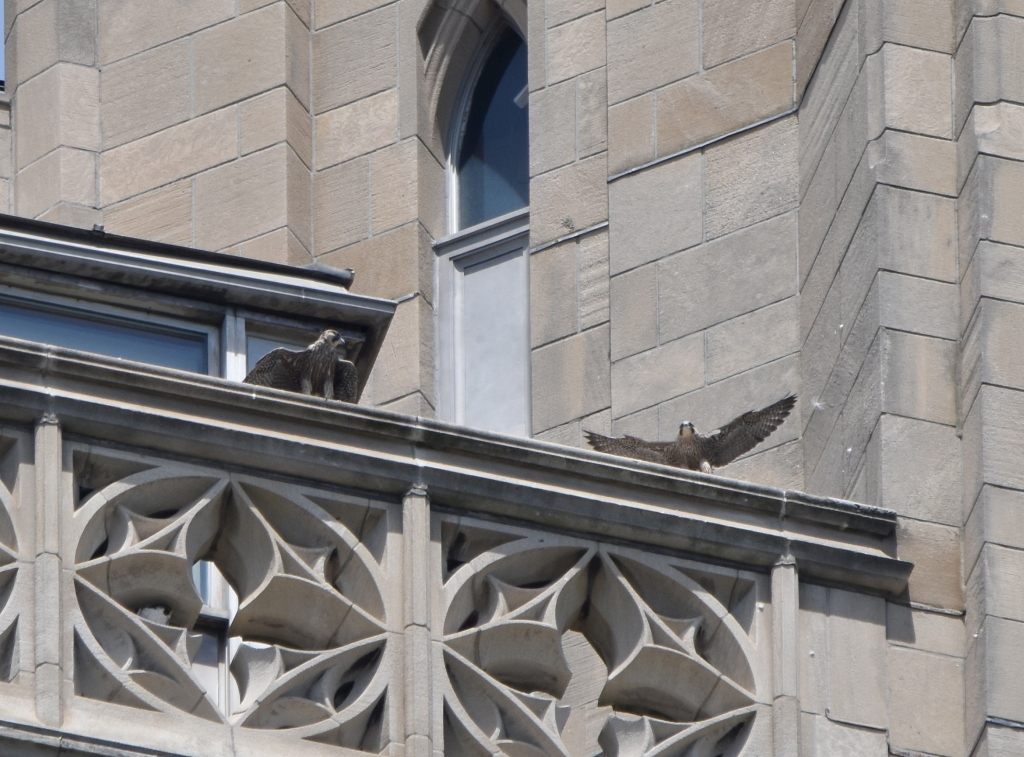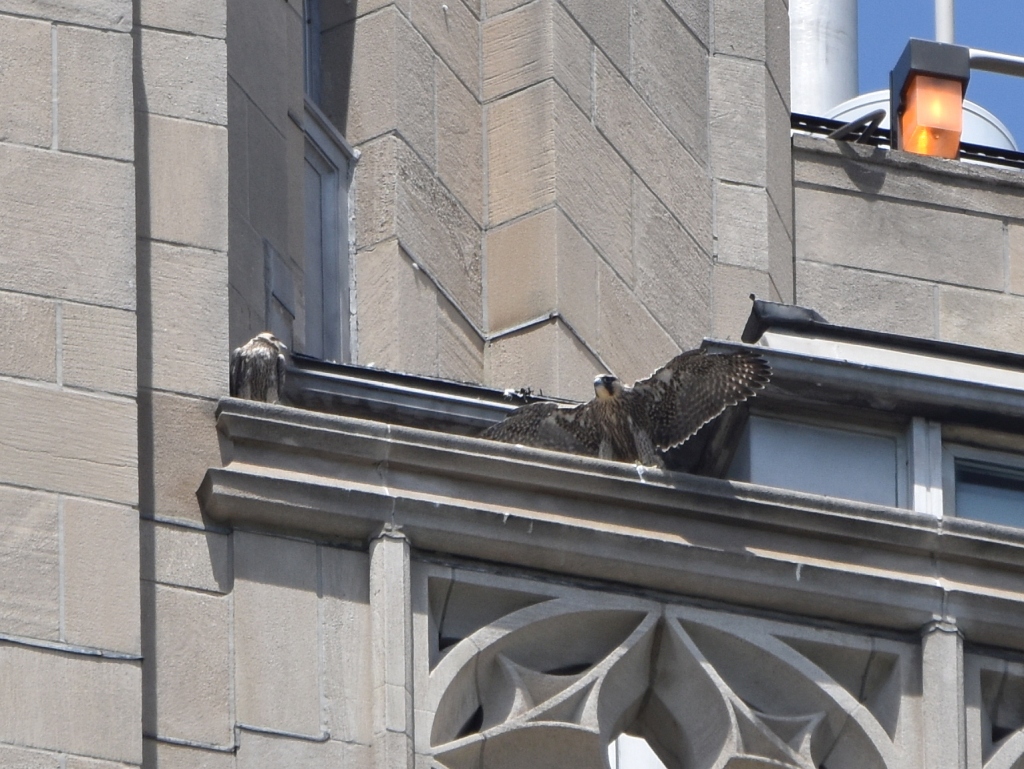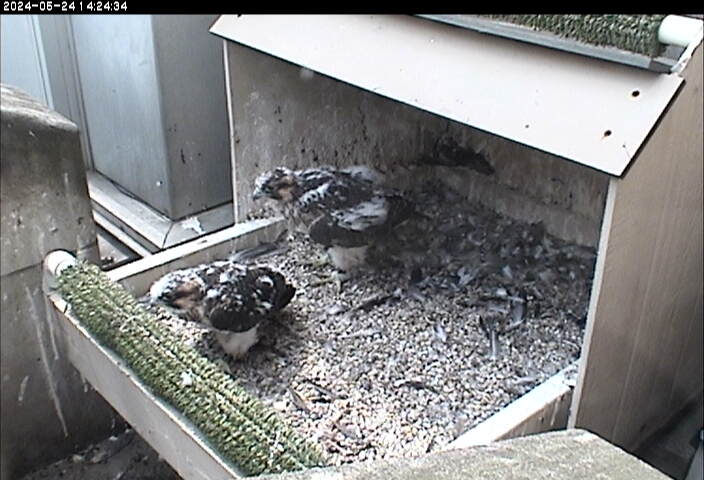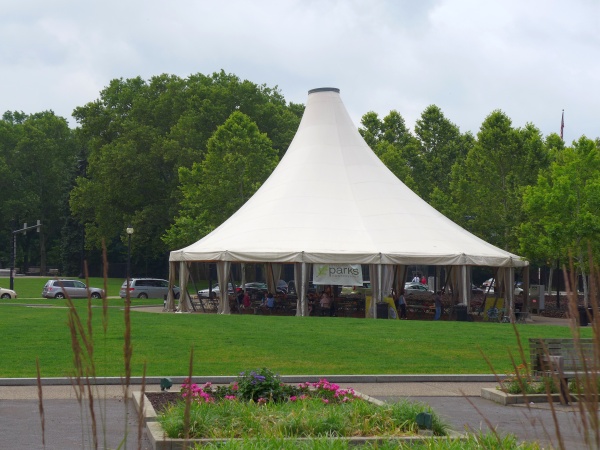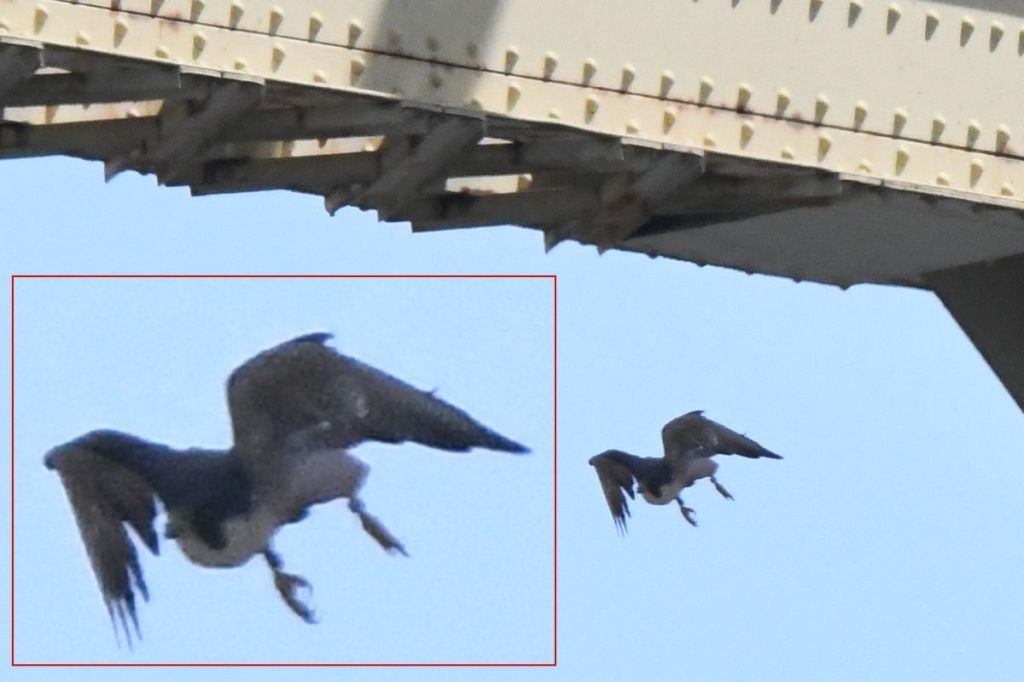
8 June 2024
Peregrine falcons have been busy this week and so have been their observers. Here’s a quick roundup of peregrine news in Pittsburgh.
Cathedral of Learning, Univ of Pittsburgh: Everyone is flying; the family is doing well.
- This week I learned that both Pitt peregrine chicks fledged on Sunday 2 June. At Fledge Watch at 4:30pm there was only one chick on the nestrail so the first one must have flown between 3:30pm & 4:30pm. Then at 7:00pm Jenna Burdette and her husband were at Schenley Plaza when the second one make its first flight. They saw Carla and Ecco accompany the fledgling around the building to its first landing.
- On Tuesday 4 June I watched Carla and Ecco demonstrate an aerial prey exchange while a youngster chased them. Carla then tried to entice the juvie to do the prey exchange with her but the youngster was tired of the game. Carla caved in and brought food to the fledgling.
- Also on Tuesday 4 June, Carla and Ecco took a “time out” from the kids by perching in inaccessible locations and bowing at the nest.
- On Wednesday 5 June Stephanie Hoogendorn on 19th floor saw and heard a juvie begging on the 16th floor patio. The juvie flew off toward Carnegie Museum.
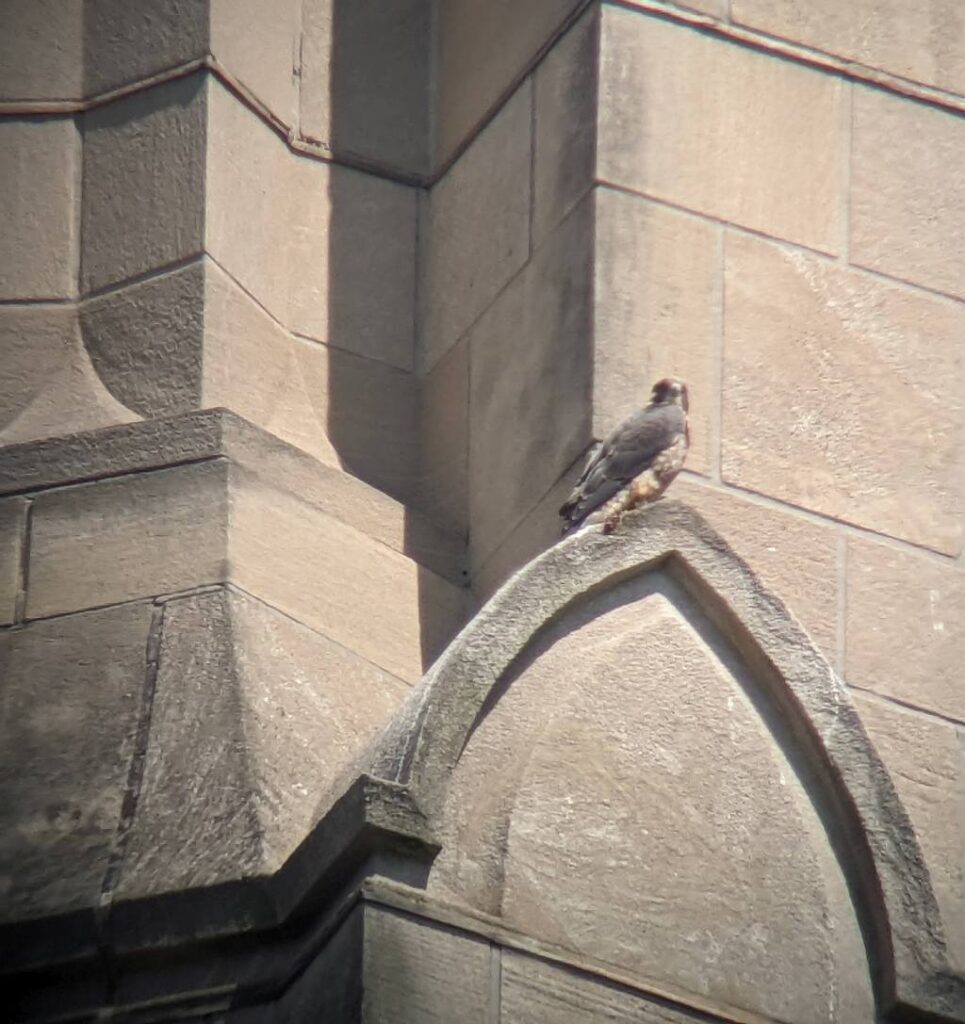
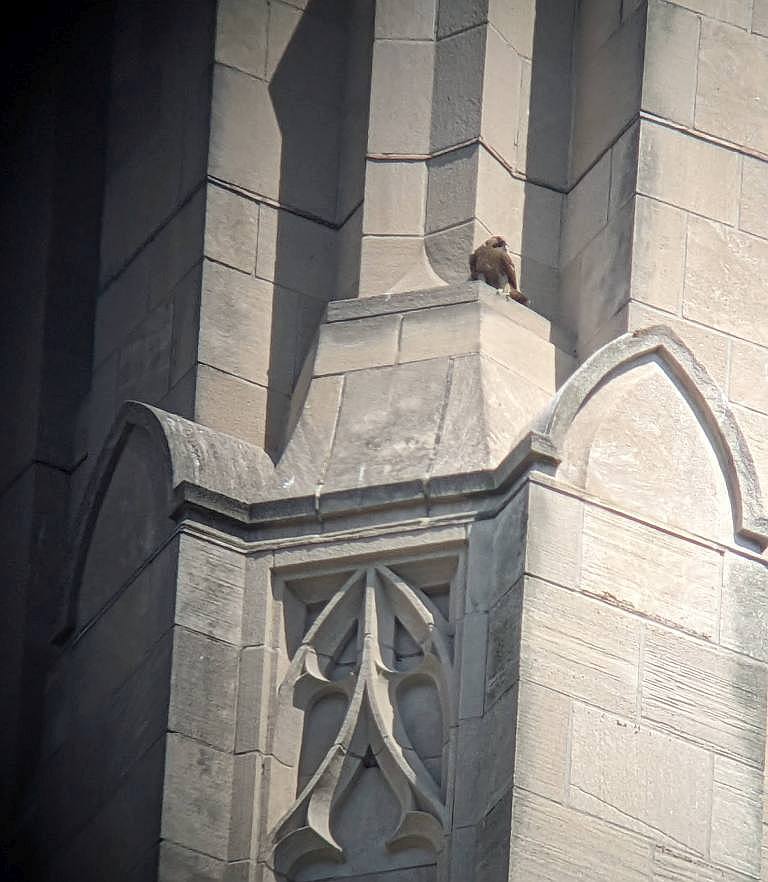
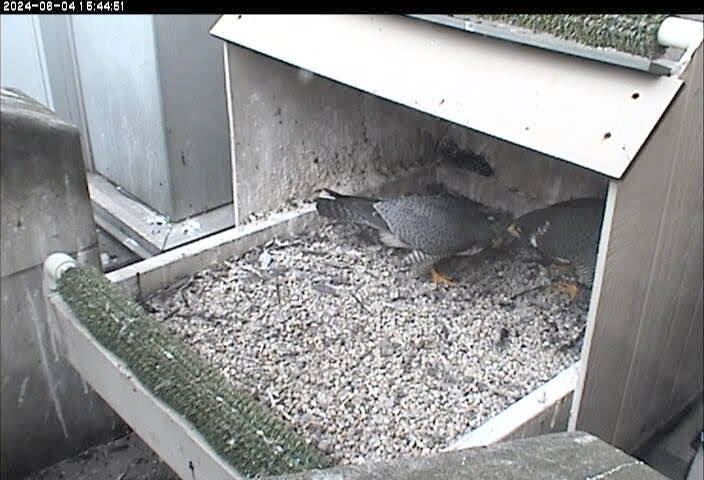
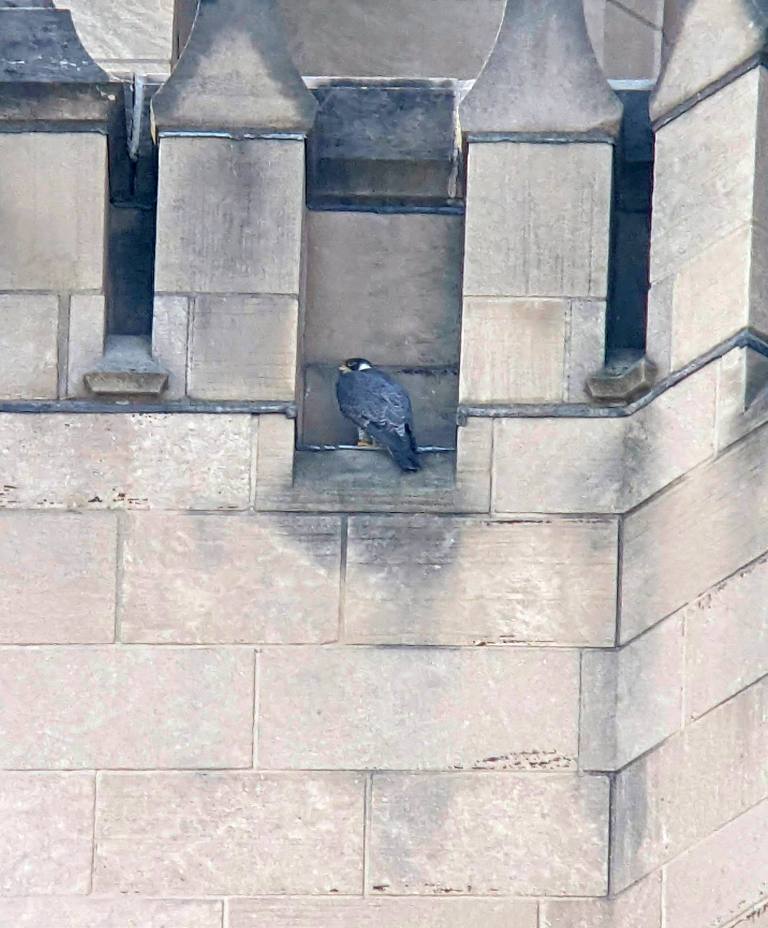
Downtown Pittsburgh:
- John English and I visited the Third Avenue peregrine site on Monday 3 June and saw four chicks at the opening and an adult on the gargoyle. The chicks hadn’t flown yet.
- On Friday 7 June Debbie Kalbfleisch stopped by Third Avenue and saw 2 young birds. One at the nest and another on the nearby roof. “While I watched, the one on the roof lifted off & down 3rd & over the building where I lost it. Also saw an adult on the bar above the nest earlier.” By now two or three have fledged.
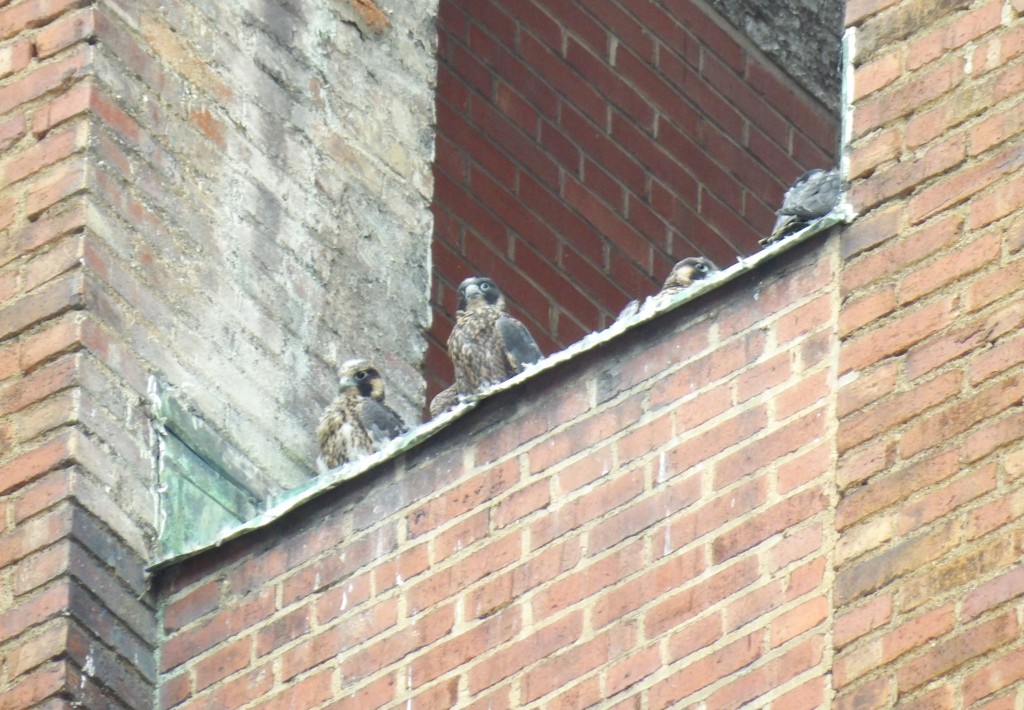
East Liberty Presbyterian Church, Pittsburgh: There’s a chick at the East Liberty Presbyterian nest! Adam Knoerzer photographed it at the nest opening on 5 June.
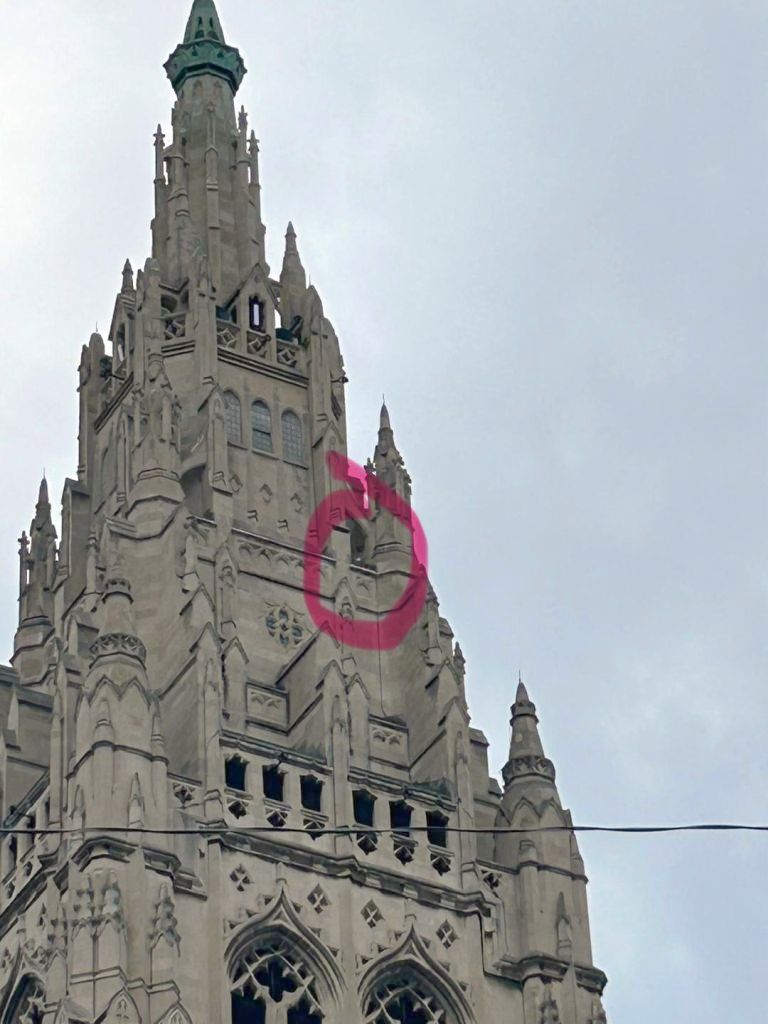
West End Bridge, Ohio River: On 4 June Jeff Cieslak photographed a peregrine at the West End Bridge (photos at top and below). When he processed the in-flight photo he noticed that the bird is banded. I wonder who it is.
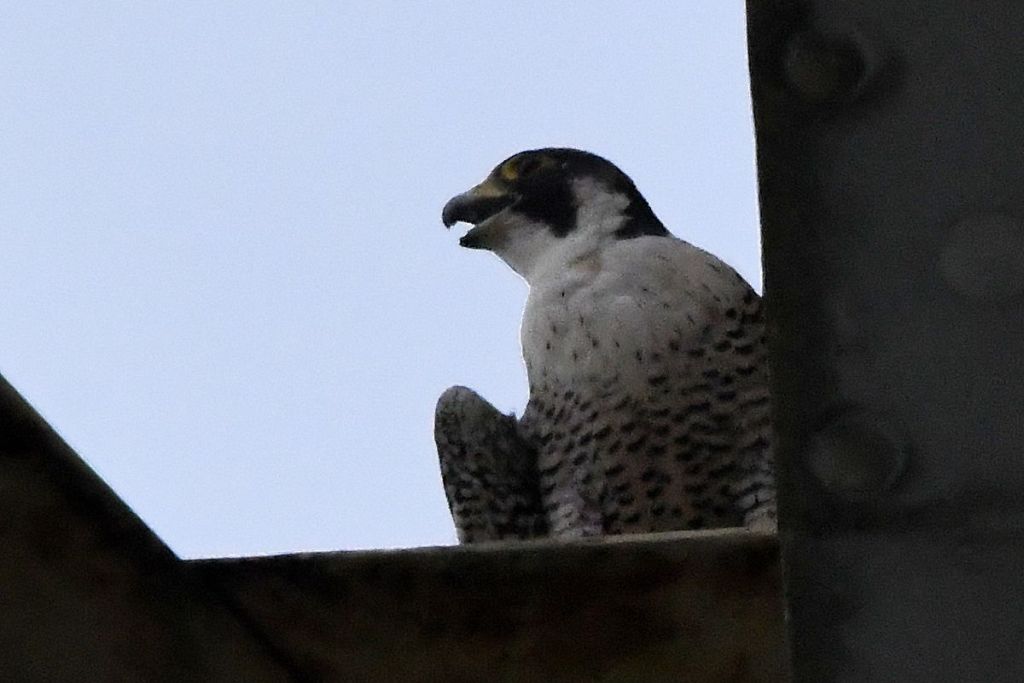
Eckert / McKees Rocks, Ohio River: No photos available but on 4 June Marcie at Don’s Diner saw peregrines at the Ohio River Boulevard Eckert Street Bridge. They were gone by the time Jeff Cieslak could get there. 🙁
Spruce Run Bridge, Ohio River: Also on 4 June Jeff Cieslak saw both peregrines at the Spruce Run Bridge. They are still getting acquainted … loudly!
